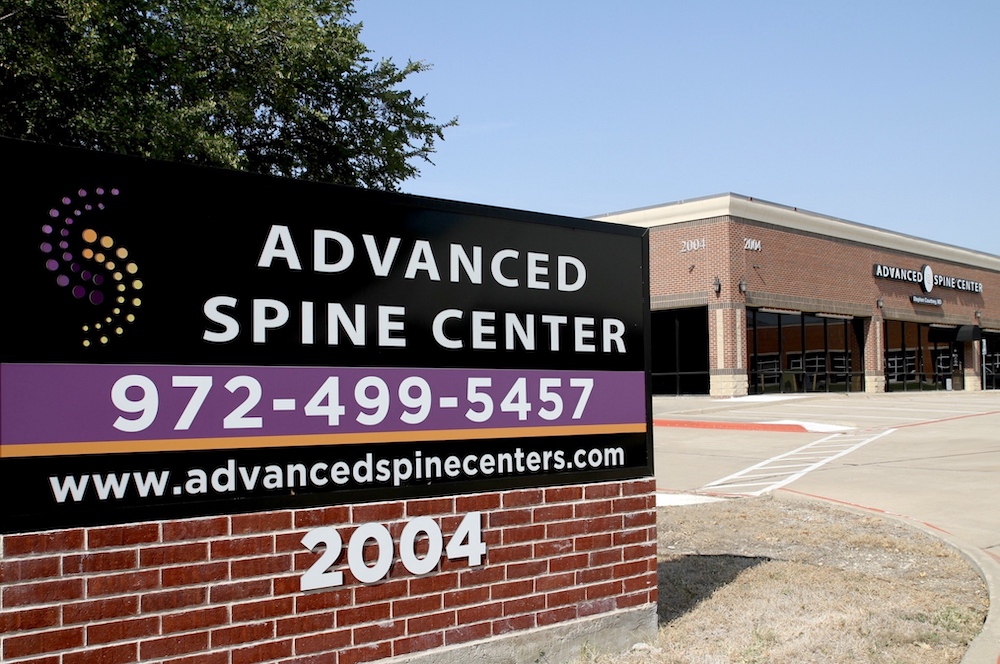Specialties
Table of Contents
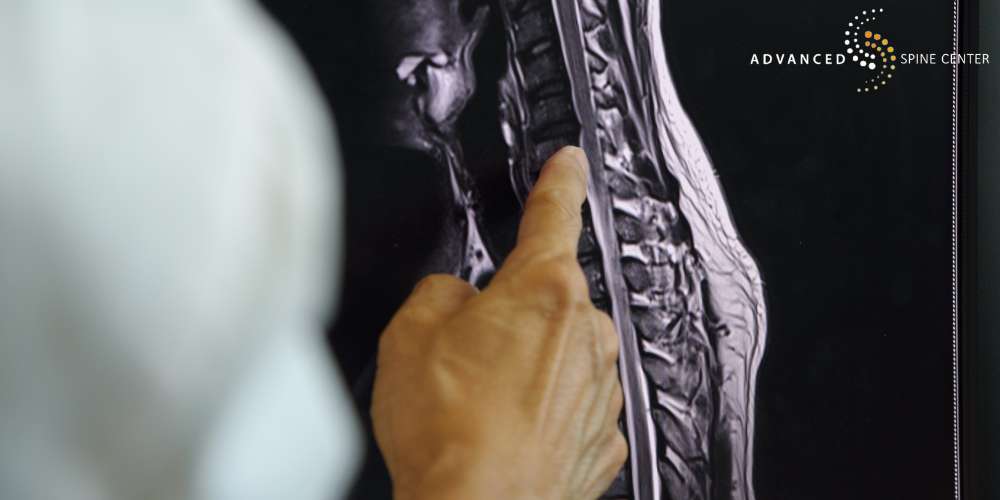
At the Advanced Spine Center in Plano, Texas, we understand the debilitating effects that spondylosis can have on your daily life. As a leading orthopedic spine surgery clinic in Plano, we specialize in providing comprehensive and personalized treatment options for spondylosis, a condition characterized by degenerative changes in the spine. It can lead to neck pain and back pain among other symptoms.
From conservative approaches like physical therapy and medication management to advanced surgical interventions, our team of experienced spine specialists is dedicated to helping you find relief and regain function. If you’re ready to get back to living your life to the fullest, call the Advanced Spine Center today at 972-499-5457.
What Is Spondylosis?
This condition is a degeneration of the spine that can affect the spine at any level, resulting in pain and discomfort that can worsen over time. It is also known as spinal osteoarthritis.
Spondylolisthesis vs Spondylosis
Spondylolisthesis and spondylosis are both spinal conditions, but they involve different underlying mechanisms and symptoms. Spondylosis, also known as spinal osteoarthritis, is characterized by degenerative changes in the spine, such as the wear and tear of spinal discs and facet joints, leading to pain, stiffness, and reduced mobility.
Spondylolisthesis occurs when a vertebra slips forward over the vertebra below it. This can happen due to a defect or fracture in the pars interarticularis, a small bone that connects the facet joints in the back of the spine. Spondylolisthesis can cause symptoms similar to spondylosis, including back pain, but may also involve neurological symptoms if the slipped vertebra compresses nearby nerves.
Spondylosis vs Spondylolysis
Spondylolysis is a defect or stress fracture in a specific part of the vertebra called the pars interarticularis, typically occurring in the lower back. This condition is often seen in younger individuals, particularly athletes, and can lead to symptoms like lower back pain, especially with activity. While spondylosis primarily involves degenerative changes, spondylolysis is more related to structural abnormalities or stress injuries in the spine.
Types of Spondylosis

Spondylosis encompasses various types of degenerative changes in the spine, each affecting different regions and presenting with unique symptoms.
Cervical Spondylosis
Cervical spondylosis involves degeneration in the cervical spine, or the neck region. It often results in symptoms such as neck pain, stiffness, and sometimes radiating pain or numbness in the arms. It can also present with other issues, such as cervical radiculopathy or cervical spondylotic myelopathy.
Thoracic Spondylosis
Thoracic spondylosis affects the thoracic spine, the region of the spine connected to the rib cage. Symptoms may include mid-back pain, stiffness, and potentially compression of nerves leading to chest or abdominal discomfort.
Lumbar Spondylosis
Lumbar spondylosis targets the lumbar spine and the lower back area. It commonly causes lower back pain, and stiffness, and may lead to symptoms radiating into the buttocks or legs, known as sciatica.
Degenerative Spondylosis
Degenerative spondylosis is a broad term referring to age-related degenerative changes in the spine, including disc degeneration, bone spurs, and facet joint arthritis. It can affect any region of the spine and often leads to pain, stiffness, and reduced mobility.
Multilevel Spondylosis
Multilevel spondylosis involves degenerative changes occurring at multiple levels of the spine simultaneously. This can lead to more widespread symptoms and may require comprehensive treatment approaches.
Lumbosacral Spondylosis
Lumbosacral spondylosis specifically affects the transition zone between the lumbar and sacral spine, often causing lower back pain that may radiate into the hips or legs.
Lumbosacral Spondylosis Without Myelopathy
Lumbosacral spondylosis without myelopathy refers to degenerative changes in the lower back and sacral spine that do not involve compression or damage to the spinal cord. This condition typically manifests as lower back pain, stiffness, and discomfort in the hips or legs.
Ankylosing Spondylosis
Ankylosing spondylosis is a type of inflammatory spondyloarthritis primarily affecting the sacroiliac joints and the spine. It can lead to fusion of the vertebrae, resulting in stiffness and reduced mobility, typically starting in the lower back and progressing upwards.
What Is the Main Cause of Spondylosis?
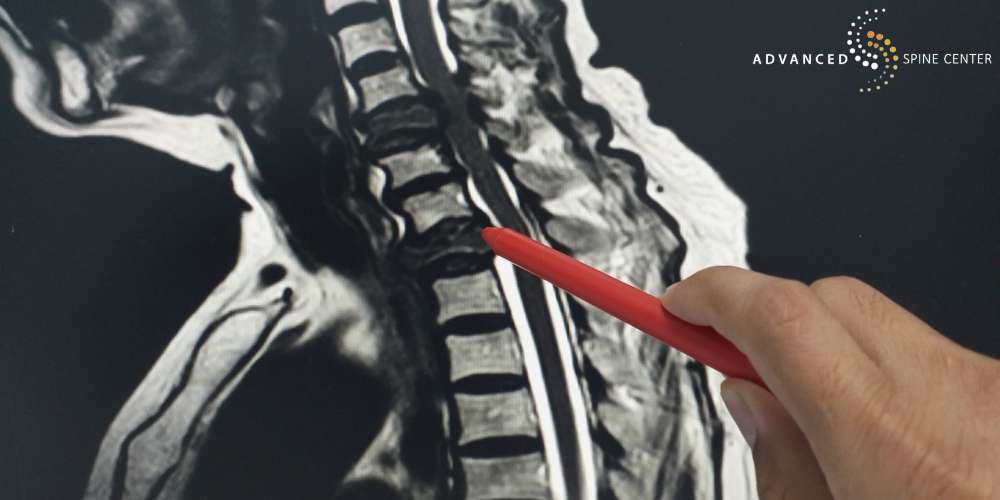
The main cause of spondylosis is typically age-related degeneration of the spine. As people age, the spinal discs lose hydration and elasticity, leading to decreased disc height and potential herniation. Additionally, the facet joints may undergo wear and tear, leading to arthritis.
Other contributing factors to spondylosis include genetics, previous spine injuries, neck injury, poor posture, repetitive stress on the spine, and certain medical conditions that affect bone and joint health. Overall, spondylosis is a multifactorial condition with various contributing factors, but age-related degeneration is the primary cause.
Degeneration Begins
The degeneration process usually begins with the discs. As the body gets older, the spinal discs begin to dry out, lose their elasticity, and collapse. The thinning of the discs places stress on the facet joints and the ligaments that hold the vertebrae together. These structures weaken, allowing the vertebrae to become overly mobile.
Causes of Pain
The vertebrae may begin to shift out of proper alignment and rub against each other. Bony growths called bone spurs may form on the irritated vertebrae. The vertebral shifting and the excess bone growth can reduce the space through which the nerve roots travel, and the nerve roots or the spinal cord can become painfully compressed.
Spondylosis Symptoms
The symptoms of spondylosis can vary depending on the location and severity of the degenerative changes in the spine. However, common symptoms may include the following.
- Severe neck pain or back pain
- Stiffness
- Radiating symptoms
- Muscle weakness
- Limited range of motion
- Headaches
- Loss of bladder or bowel control
- Spinal stenosis, which is a narrowing of the spinal canal
Cervical Spondylosis Symptoms
Degeneration in the cervical spine may cause neck, shoulder, and arm pain. It may also result in loss of fine motor skills, weakness, numbness, and tingling in the arms and legs.
Thoracic Spondylosis Symptoms
Degeneration in the thoracic spine may cause pain in the chest and upper abdomen. It may also result in weakness, numbness, and tingling in the legs.
Lumbar Spondylosis Symptoms
Degeneration in the lumbar spine may cause pain in the back, buttocks, or legs, with possible numbness, and muscle weakness that may be worsened by activities such as lifting, bending, twisting, or sitting.
How to Diagnose Spondylosis
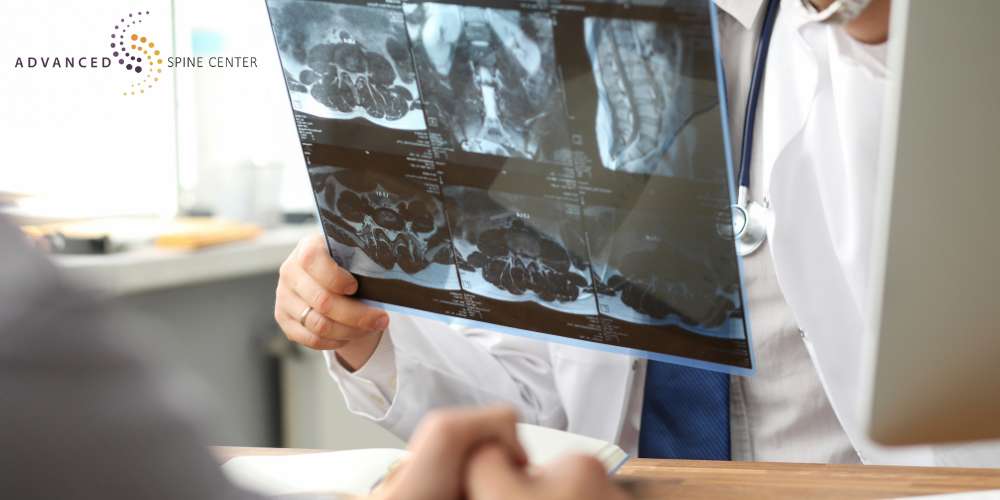
Diagnosing spondylosis typically involves a combination of medical history assessment, physical examination, and diagnostic imaging studies. During the medical history assessment, your healthcare provider will inquire about your symptoms, medical history, and any factors contributing to spinal degeneration, such as previous injuries or family history of spine-related conditions.
Physical examination involves evaluating your range of motion, muscle strength, reflexes, and sensation in the affected area of the spine. Your healthcare provider may also perform specific maneuvers to assess for pain, stiffness, or neurological deficits associated with spondylosis.
Diagnostic imaging studies, such as X-rays, CT scans, or magnetic resonance imaging (MRI) scans, are often used to visualize the spine structures and identify degenerative changes characteristic of spondylosis. X-rays can reveal changes in the spine’s alignment, the presence of bone spurs, or the narrowing of the spinal canal.
CT scans provide detailed images of the bones and can detect fractures. MRI scans offer detailed views of soft tissues, including discs, nerves, and ligaments, helping to identify herniated discs, nerve compression, or spinal cord compression.
Spondylosis Treatments in Plano, TX
Treatment options include nonsteroidal anti-inflammatory drugs, physical therapy, rest, lumbar supports, and spinal steroid injections. Some medications can help relieve pain and muscle spasms in the neck. In severe cases, surgery may be needed.
Cervical Spondylosis Treatment
Treatment for cervical spondylosis depends on the severity of the condition. Initially, conservative approaches such as rest, physical therapy, and pain management techniques like nonsteroidal anti-inflammatory drugs (NSAIDs) or muscle relaxants may be recommended to reduce pain and inflammation and improve muscle strength and flexibility.
Additionally, cervical traction or neck braces may be prescribed to provide support and alleviate pressure on the spine. If conservative measures fail to provide relief, more invasive treatments such as corticosteroid injections into the affected area or surgical interventions can address the symptoms.
Thoracic Spondylosis Treatment
Treatment options for thoracic spondylosis primarily focus on managing symptoms and improving spinal function. Conservative treatments include physical therapy to strengthen muscles supporting the thoracic spine and improve flexibility, as well as pain management techniques like over-the-counter or prescription medications to alleviate discomfort.
Lifestyle modifications such as maintaining proper posture, avoiding activities that exacerbate symptoms, and incorporating regular exercise to promote spinal health may be recommended. In cases where conservative measures are ineffective, more invasive interventions such as corticosteroid injections or surgical procedures may be considered.
Lumbar Spondylosis Treatment
Treatment options for lumbar spondylosis aim to relieve pain, improve mobility, and prevent further spinal deterioration. Initially, conservative approaches such as rest, physical therapy, and pain management techniques like nonsteroidal anti-inflammatory drugs (NSAIDs) or muscle relaxants may be recommended to reduce inflammation and alleviate discomfort.
Physical therapy can help strengthen the muscles supporting the lower back and improve flexibility. Lifestyle modifications such as maintaining a healthy weight, practicing good posture, and avoiding activities that strain the spine can also be beneficial. In cases where conservative measures fail to provide relief, more invasive treatments such as epidural steroid injections or surgical procedures like laminectomy or lumbar spinal fusion may be considered.
Spondylosis Surgery in Plano
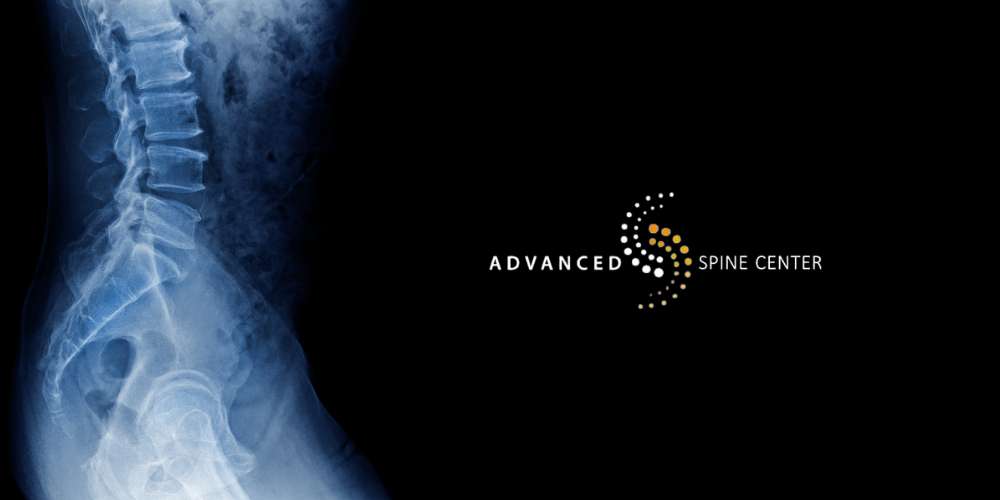
Spondylosis surgery is typically considered when conservative treatments have failed to alleviate symptoms or when there is significant spinal instability, severe pain, or neurological deficits due to compression of the spinal cord or nerves.
The goal of surgery is to decompress the affected spinal nerves, stabilize the spine, and restore function and mobility. Surgical procedures for spondylosis may include the following.
- Laminectomy: Removal of part of the vertebral bone to relieve spinal nerves or spinal cord compression.
- Discectomy: Removal of herniated disk material.
- Spinal fusion: Joining two or more vertebrae together to stabilize the spine.
- Artificial disc replacement: Removing the damaged vertebrae and replacing them with artificial discs.
Recovery from spondylosis surgery varies depending on the type of procedure performed. It may involve a rehabilitation period and visits with a physical therapist to optimize outcomes and regain function.
Contact a Spondylosis Doctor at the Advanced Spine Center in Plano, TX
At the Advanced Spine Center in Plano, TX, we understand that each case of spondylosis is unique, and we are committed to providing personalized treatment plans tailored to your specific needs. Our team of skilled orthopedic specialists is equipped with the latest technology and techniques to ensure you receive the highest quality care.
Whether you’re exploring conservative treatments or considering surgical options, we are here to support you every step of the way. For more information on how we can help you manage your spondylosis symptoms and improve your quality of life, please contact us to schedule a consultation. We are here to help you get back to the activities you love with as little pain as possible.
